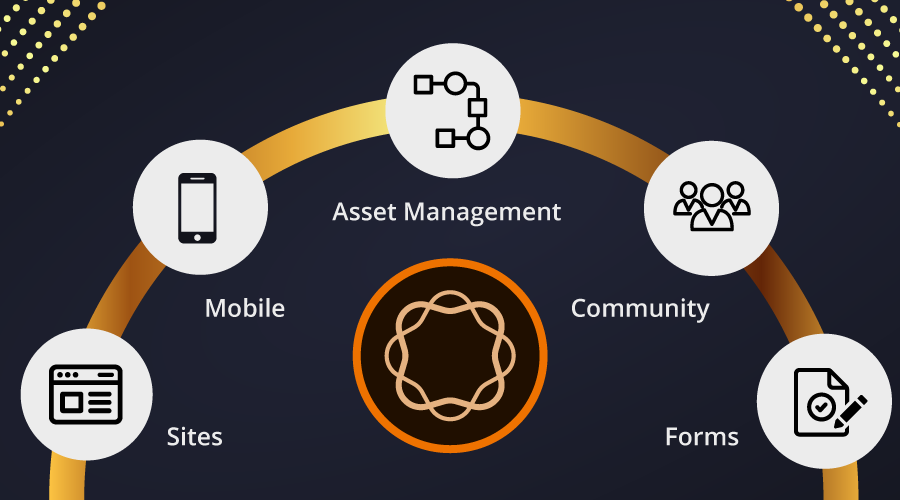BLOG
| By undefined undefined | March 14, 2022
AEM From Scratch
- What is Adobe Experience Manager?
AEM is a content management system offered by AEC (Adobe Experience Cloud). This tool enables easy and dynamic digital asset management with document management solutions, social engagement options, and community connection portals.
Creative teams can use AEM as a central workstation and streamline their present work processes seamlessly. It also enables teams to work together in harmony from different locations and deliver attractive media to users across different channels. The biggest benefit of AEM is that it simplifies the management and delivery of a website’s content.
- Where is it used?
It is a part of the Adobe Marketing Cloud(AMC) services which are basically a one-stop solution for managing the digital side of any business, from websites, webapps, digital marketing, analysis, shops, etc.

AEM Modules and Functionalities
AEM comes loaded with five modules—Sites, Assets, Mobile, Forms, and Community—which together make it a top-notch CMS platform to create and deliver high-traffic websites, forms, and mobile applications.
- Is AEM in demand?
Since AEM is a leader in the CMS industry, by integrating the important functions of content management and digital marketing, AEM empowers businesses with excellent experiences and convenient workflows.
That's why AEM use is rising rapidly, and the market for the next decade or two will be overflowing with the need of AEM devs.

AEM Features
*Digital Asset Management (DAM)
AEM’s Digital Asset Management (DAM) comes with a variety of functions that include visual searching, enterprise-grade metadata, multilingual assets management, and smart tagging to help you store, manage, and find assets quickly.
*Security
AEM is a secure and reliable CMS platform that offers total privacy and protection of your business’s vulnerable data. It supports all the standard authentication protocols including SAML SSO and LDAP and regularly releases AEM security hotfixes that can be easily installed.
*Headless CMS Capabilities
The headless CMS capabilities of AEM allow you to utilize various technologies to deliver content across all channels. You get complete control over how the content is presented on diverse channels like mobile, desktop, IoT, and PIM systems. This provides you with maximum flexibility and capability to offer true omnichannel experiences.

*SEO and User Experience
AEM can scan your content and automatically assign metadata and tags to your content assets. This feature is particularly helpful when you have to upload copious amounts of content without compromising on SEO.
You can also edit the assigned tags as per your preference. In addition, it facilitates a quick search of the required media which improves the team’s efficiency.
- Is AEM easy to learn?
Learning AEM can be a challenge, especially for beginners. The platform is easy to use, but it is still large and complex.
However, the Back-End is still built on Java API sets and the Front-End is based on js and css, so anyone familiar with these technologies should be able to hop in fairly quickly.